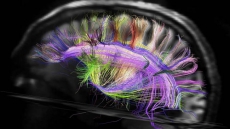Using advanced 3D facial imaging techniques, researchers at University of Missouri have identified facial measurements in children with autism that may lead to a screening tool for young children and provide clues to its genetic causes.
"We wanted to detect the specific facial traits of the face of a child with autism. Doing so might help us define the facial structures common to children with autism and potentially enable early screening for the disorder," explained Ye Duan, associate professor of computer science.
Duan and professor Judith Miles used a system of cameras to photograph and generate 3D images of children's faces.
The children selected were between 8 and 12 years old.
One group of children had been diagnosed with autism while the other group consisted of typically developing children.
Researchers photographed the faces of children using 3D imaging which allowed scientists to measure distances along the curvature of the face rather than in a straight line as had been done in previous tests.
The analysis revealed three distinct subgroups of children with autism who had similar measurement patterns in their facial features.
"Using 3D images and statistical analysis, we created a 'fine-tuned map' of children's faces and compared those measurements to the various symptoms they exhibit," Miles added.
"Identifying genes associated with each subtype of autism could potentially lead to the development of more effective treatments and drug therapies," she concluded.




